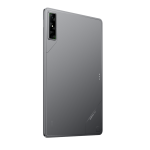Next-Gen Fitness Bands: Compact, Powerful, and Tailored Beyond Athletes
Whoop Inc., renowned for its screen-less fitness trackers, has unveiled its most advanced hardware yet — the Whoop 5.0 and Whoop MG (Medical Grade). With a sleeker design, extended battery life, and groundbreaking features like blood pressure monitoring and electrocardiogram (ECG) capabilities, these wearables are engineered to serve more than just elite athletes. Whether you’re a fitness enthusiast, a health-conscious individual, or someone managing chronic conditions, the Whoop 5.0 lineup offers an intelligent, user-friendly alternative to traditional smartwatches.
Key Features of Whoop 5.0 and Whoop MG: A Fitness Tracker Redefined
Both devices are packed with new features aimed at improving health monitoring and daily wellness tracking:
- Blood pressure tracking (exclusive to the MG model)
- Electrocardiogram (ECG) capabilities
- Atrial fibrillation (AFib) detection
- Enhanced sleep tracking
- VO2 Max and physiological age assessment
- Women’s health tracking, including insights into hormonal fluctuations
- Water resistance up to 10 meters for up to 2 hours
- Auto-detection for workouts and strain tracking
- Improved battery life, lasting up to two weeks — extendable to one month with the wireless charger
The Whoop MG is especially designed for users requiring medical-grade health metrics, positioning itself as a powerful tool in preventive and active health monitoring.
A Subscription-First Model with Tiered Benefits
Whoop adopts a subscription-only pricing model that prioritizes data over hardware ownership:
- Base Plan: $199 per year, following a one-month free trial
- Peak Plan ($239): Includes physiological age analysis
- Life Plan ($359): Unlocks advanced health features like blood pressure tracking, ECG, and irregular heart rhythm alerts
While the hardware itself is “free,” users will need to pay separately for additional bands, ranging from $49 to $199.
Fitness Tracker Without a Screen — and That’s the Point
One of Whoop’s standout decisions is its deliberate omission of a display. This design choice:
- Extends battery life dramatically
- Reduces distractions during workouts or sleep
- Keeps the device discreet and lightweight
- Eliminates the need for app-specific UX/UI development
Despite lacking a screen, the Whoop 5.0 performs impressively with auto-logging for runs, walks, and general activity, syncing seamlessly with popular health apps such as Apple Health, Strava, Cronometer, Withings, and TrainingPeaks.
Advanced App Integration: From Sleep to Strain
The real magic lies within the Whoop mobile app. It presents a comprehensive dashboard powered by biometric insights:
- Sleep Performance Score — evaluates rest based on time, quality, efficiency, and sleep stress
- Recovery Score — based on your ability to perform based on heart rate variability, resting heart rate, and respiration
- Strain Score — measures cardiovascular exertion throughout the day
These metrics are represented through color-coded rings, making the app both intuitive and visually informative.
Furthermore, the app provides deep data on:
- Respiratory rate
- Resting heart rate
- Skin temperature
- Blood oxygen saturation
- Heart rate variability (HRV)
The system’s Whoop Age feature, based on nine biomarkers, gives you a snapshot of your physiological age and helps track improvements over time — a unique motivator for long-term fitness engagement.
Women-Centric Wellness Features
Recognizing a significant gap in the wearable market, Whoop integrates female-specific health insights. These include hormone tracking for pregnant, menstruating, and menopausal users, broadening the appeal of the product beyond its athletic roots.
This strategic shift aligns with Whoop’s larger goal of reaching a diverse and general wellness market, rather than just professional athletes. The marketing now targets everyday users, including women seeking holistic health insights.
Durability, Comfort, and Customization
The Whoop 5.0 is both durable and lightweight, with a minimalist design that doesn’t draw attention. Straps come in a range of materials — from knit to leather — giving users flexibility in style.
During a month-long test, the device proved comfortable for sleep, safe for showers, and reliable in wet conditions, such as swimming (though diving is not advised).
Setbacks and Shortcomings: Not Quite Perfect Yet
Despite its strengths, Whoop 5.0 and MG aren’t without flaws:
- Assembly Difficulty: Setting up the strap can be frustrating. Even the company hosts a how-to video for users struggling with the clasp system.
- Slow Charging: The battery takes up to 2.5 hours to fully charge, which is notably longer than most competitors like Garmin or Apple Watch.
- Subscription Dependency: Cancelling your plan renders the hardware useless. Moreover, you won’t automatically receive hardware updates unless you extend your membership or pay a $49 upgrade fee.
The Competitive Landscape: A Smartwatch Alternative
Whoop is part of a broader trend where non-screen fitness wearables are gaining popularity. Competitors like Oura Ring and Samsung’s Galaxy Ring are catering to users who want powerful health tracking without the distractions of a smartwatch.
With the wellness tech market projected to hit record highs, Whoop is strategically positioned. The company has seen a 70% rise in subscriptions in the past year, a clear indicator that consumers are hungry for data-driven fitness tools without the noise of traditional screens.

